I. HISTORY OF THE DEPARTMENT
The Government Mohan Kumaramangalam Medical College was started in 1986. Foundation stone was laid by late Sri. Rajiv Gandhi, the Prime minister in 1987. MCI recognition was got in 1996.
Our First Ophthalmic ward was opened by Sri K. KAMARAJ NADAR, Chief Minister on 20-10-1956. Our Hospital is the tertiary care centre for the surrounding 4 districts.
The Ophthalmology department functions in a separate block accommodating the Outpatient, Inpatient and Operation Theatres. We have 4 Major operation theatres and one Minor operation theatre. We see around 35,000 outpatients per year and operate on more than 4000 patients per year.
We have trained faculty for Cornea, Oculoplasty, Vitreo retinal surgery, low vision aids, Strabismus , Paediatric Ophthalmology and Medical Retina. We perform surgeries on all 6 days a week. The surgeries performed are for Cataract (SICS / Phacoemulsification), Keratoplasty, Oculoplasty, Anti glaucoma Surgeries , Squint Surgery and Surgeries for Peadiatric cataract, and Retina.
We have Special Clinics for Glaucoma and Nd YAG Laser for doing laser iridotomy and capsulotomy. We screen for Retinopathy of Prematurity for infants in NICU and screen for diabetic retinopathy in the diabetic outpatient department. We have complete set up for Vitreo retina including OCT, Fundus camera, B Scan, Green laser and Vitreo retina operation theatre.
We have Green Laser to treat for retinal diseases (ROP and DR). Being a tertiary care centre with super specialty hospital we attend to number of Trauma and Neuro-Ophthalmology patients. 2 seats of MS Postgraduates joined in our department from the year 2017.
OUR DEPARTMENT PAST HOD
- PROF DR M.C. PALANI
- PROF DR A.K. RAGHU
- PROF DR M KARUPPUSAMY
- PROF DR VASUDHARANI
- PROF DR S SOZHAMADEVI
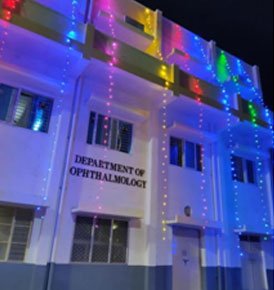
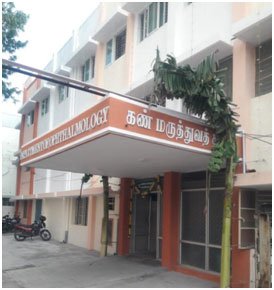
2. ADMIN
a.Name and Designation of all Faculties:
| S.NO | DESIGNATION | NAME OF THE FACULTY |
|---|---|---|
| 1 | Professor & HOD | Prof Dr A R Anbarasi M.B.B..S.,D.O.,M.S(Ophthal) |
| 2 | A Professor | DR P Venkatesh M.B.B.S.,M.S(Ophthal) |
| 3 | Associate Professor | DR R Thenmozhi M.B.B.S., M.S(Ophthal) Dr R Niraimozhi M.B.B.S.,M.S(Ophthal) |
| 4 | Assistant Professor | DR S Uma Maheawari M.B.B.S., M.S(Ophthal) DR P V Rajendran M.B.B.S.,M.S(Ophthal) |
| 5 | Senior Resident | Dr R Sathiskumar M.B.B.S.,M.s(Ophthal) |
b. Department Address for Communication:
Department of Ophthalmology,
Government Mohan Kumaramangalam Medical College Hospital, Salem - 636001
Salem - 636001
c. Mail ID - govtophthal@gmail.com
d. Department website Incharge - DR R ThenmozhiM.S(Ophthal)
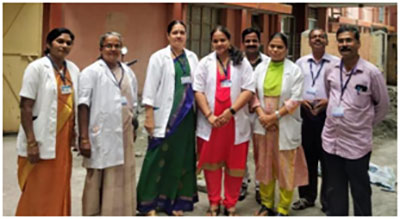
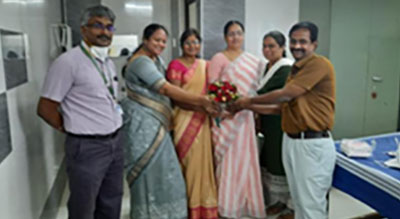
3.ACADEMIC ACTIVITIES
Courses handled:
DEPARTMENT GIVES TRAINING TO UNDER GRADUATE STUDENTS:
8 weeks clinical posting & 100 hrs of theory classes for prefinal year MBBS Students are handled by Department faculty.
a. 100 hours of theory class.
b. 8 weeks clinical classes
i. students are taught to examine the patients and make clinical diagnosis and to present the case.
ii. Observe surgeries in operation theatre.
c. GROUP DISCUSSION on every Friday.
d. We are conducting 4 Symposium for pre-final year students.
SPECIAL ACADEMIC:
CME and Quiz programme for undergraduates.
C.R.R.I:
All undergraduate students undergo training in Ophthalmology during their internship for 15 days. Once in a week we have group clinical discussion about interesting case .
NURSING STUDENTS:
Diploma & Bsc nursing students are attending eye OP for their clinical Posting.
Theory classes are also taken by department faculty on Tuesdays and Fridays.
LIBRARY:
A spacious and furnished library with books and journals are available in our department.
4.RESEARCH PUBLICATION BY FACULTIES:
DR P VENKATESH:
1. An analytical study on role of focal lasers in the treatment of chronic central serous chorioretinopathy in tertiary care centre, International Journal of Scientific Research, March 2019.
2. Study of incidence and risk factors of Retinopathy of Prematurity in sick neonatal care unit in tertiary care centre, Global Journal of Research Analysis, March 2019.
3. A Study on changes in choroidal thickness in antenatal women with pregnancy induced hypertension using spectral domain optical coherence tomography, Dec 20
DR R THENMOZHI:
1. Incidence Of Ocular And Systemic Associations With Congenital Ptosis, Its Management And Complications Following Ptosis Surgery- Original Article, Jemds/Vol 5/Issue 6/Jan 21,2016.
2.Sodium Bicarbonate Buffered Lignocaine And Hyaluronidase Mixed Lignocaine For Ocular Anaesthesia in Cataract Surgery – A Comparative Study, International journal of science,
3. A Study on changes in choroidal thickness in antenatal women with pregnancy induced hypertension using spectral domain optical coherence tomography, Kerala Journal of Ophthalmology, December 2020
DR S UMAMAHESWARI:
1. To determine the association of Glaucoma in Pseudo exfoliation, Journal of evidence based medicine and health care, October 2018.
2. Incidence of retinopathy changes in the newly detected cases of Type-2 diabetes Mellitus, Journal of evidence based medicine and health care, April 2018.
CME
i.Our departmental Continuing medical education – COMPREHENSIVE OPHTHALMOLOGY ON 22-6-2016 at conference hall in PMSSY auditorium with 10 credit points.

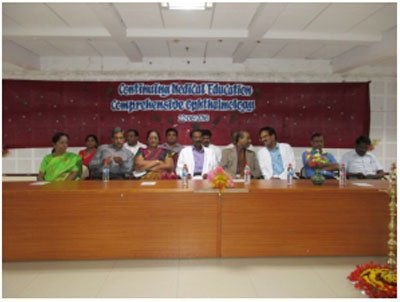
Hands on training of Fundus examination for post graduates in Medicine, Paediatrics and Psychiatry department was conducted .


ii. Another CME regarding ROP WAS CONDUCTED ON 10/18
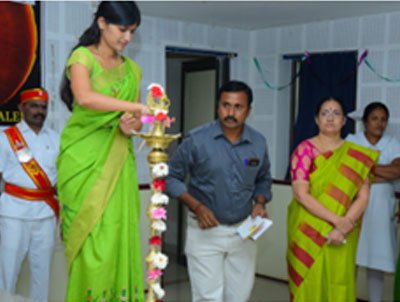
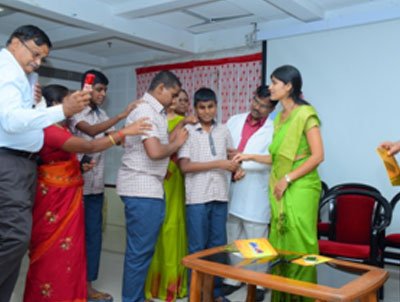
QUIZ PROGRAMME was conducted for the under graduate students and after final round, first three prizes were distributed:
First prize was Titan watch with Momentos,
Second prize was Pen drive with Momentos,
Third prize Momentos
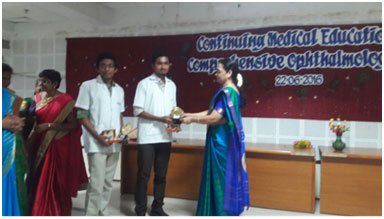
The RISHI NETHRALAYA –MEDAL EXAMINATION for Final Year MBBS Part-1 was held on 09/03/2020 for the year 2019-2020. Dr Soorya won the Medal.
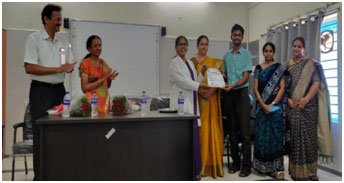
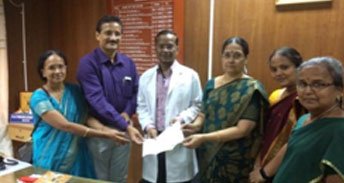
5. INFRASTRUCTURE:
2 Floor building with individual faculty rooms
Beds -40
Major OT -4
Minor OT -1
Auditorium with smart board
Library
Separate Specialty clinic rooms
Eye Banking
6.PERFORMANCES
| S.NO | PERFORMANCES | Year I(2020) | Year II(2021) | Year III(2022) |
|---|---|---|---|---|
| 1 | No of Patients in OPD | 39662 | 18955 | 25467 |
| 2 | No of Patients in IPD | 3697 | 1208 | 3303 |
| 3 | No of major operations | 3562 | 1161 | 2585 |
| 4 | No of Minor operations | 1585 | 217 | 504 |
| 5 | No of Day care operations | 4700 | 1600 | 3017 |
INFRASTRUCTURE & EQUIPMENTS & FACILITIES AVAILABLE:
PHOTOS
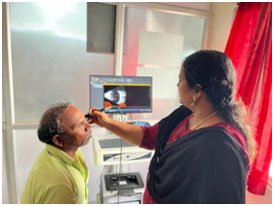
Figure 1B SCAN
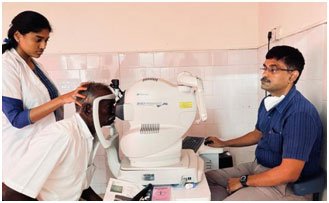
Figure 2 OCT
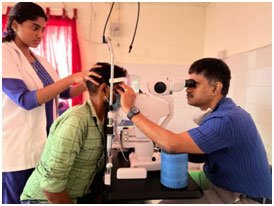
Figure 3 GREEN LASER
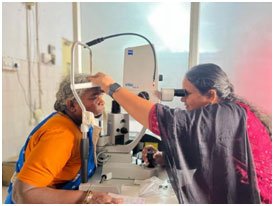
Figure 4 ND YAG LASER
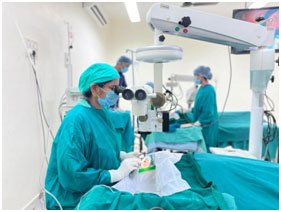
Figure 5 OPERATING MICROSCPE
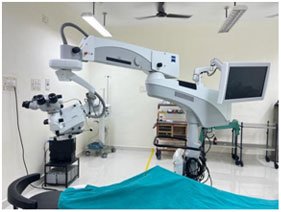
Figure 5 OPERATING MICROSCPE
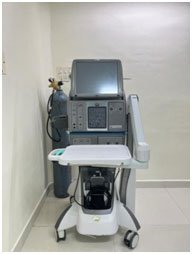
Figure 6 PHACO MACHINE

Figure 6 PHACO MACHINE
6. SPECIALITY CLINICS
| S.NO | SPECIALITY CLINICS | DAYS |
|---|---|---|
| 1 | GLAUCOMA CLINIC | WEDNESDAY |
| 2 | SQUINT CLINIC | SATURDAY |
| 3 | CORNEA | TUESDAY |
| 4 | RETINA CLINIC | THURSDAY AND FRIDAY |
| 5 | NEURO-OPHTHALMOLOGY CLINIC | SATURDAY |
| 6 | OCULOPLASTY CLINIC | MONDAY |
7. CMCHIS
Around patients were benefitted by CMCHIS .The Surgeries we done under this scheme were :
- Congenital Catarac
- Trabeculectomy for Glaucoma
- Lid Reconstruction for Tumours, defect in eyelid- trauma.
- Keratoplasty.
- Evisceration / Enucleation with Orbital Implants.
- Green lasers for Diabetic Retinopathy.
- Orbitotomy.
- Strabismus surgery-2 muscle/3 muscle.
- Inj. Methyl Prednisolone for Optic Neuritis.
- Ptosis surgery.
- Vitrectomy
- Intra vitreal injections.
- Pterygium
- Lateral canthoplasty
- Tarsorrhaphy
- Corneal/sclera tear
- PRP
- YAG cap/ PI
EYE DONATION
A. WHOM CAN DONATE EYE?
1. Anyone from the age of one, There is no age-limit for donating the eye.
2. People using spectacles and those diagnosed with diabetes and hypertension can donate their eyes.
B.WHOM SHOULD WE CONTACT TO DONATE EYES?
1. Eyes need to be removed within six hours after death
2. So it is important to get in touch with your nearest eye bank at the earliest.
C. PLEASE REMEMBER THE FOLLOWING:
1. Keep the eyes of the deceased closed and covered with moist cotton.
2. Switch off the ceiling fan, if any, directly over the deceased person
3. If possible, apply antibiotic eye drops periodically in the deceased’s eyes to reduce the chance of any infection.
4. Raise the head of the deceased by about six inches, if possible, to reduce the chances of bleeding at the time of removal of the eyes
D.WHO CANNOT DONATE THEIR EYES?
1. Death due to unknown causes.
2. People who die due to infections such as rabies, syphilis, infectious hepatitis, septicemia, and AIDS, cannot donate.
E. CAN A PERSON WHO IS BLIND DUE TO RETINAL OR OPTIC NERVE DISEASE DONATE HIS EYES?
Yes, provided the cornea of the donor is clear.
F. FOR EMERGENCIES, MORE DETAILS AND TO PLEDGE YOUR EYES, PLEASE CONTACT:
0427- 2210674 GMKMCHOSPITAL, SALEM.
